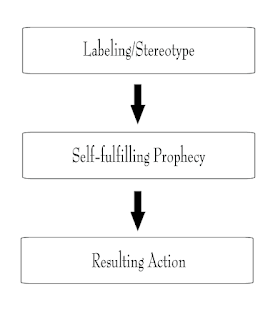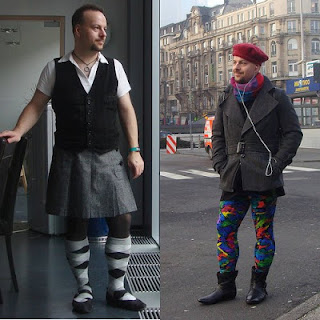.jpg) |
| திருநங்கை சொப்னா |
மதுரையை சேர்ந்த திருநங்கை சொப்னா பத்தாம் வகுப்பில் 94%, 12-ம் வகுப்பில் 92% சதவிகிதம் மதிப்பெண்கள் பெற்றவர் பாலின ரீதியான ஒடுக்குமுறை, சமுகத்தின் கிண்டல், ஏளனம் என்று பல கஷ்டங்கள், பிறப்பால் இசுலாமிய மதம் இதனால் மத ரீதியான அடக்கு முறை என்று எல்லா கஷ்டங்களை மீறி பி. எ தமிழ் மற்றும் பி. சி. எ படித்துள்ள இவர், சமீபத்தில் மத்திய அரசுப் பணியாளர் தேர்வாணையம் நடத்திய போட்டித் தேர்வில் பங்கேற்பதற்காக விண்ணப்பித்தார். அதில், பாலினம் என்ற இடத்தில் ஆண், பெண் என்று மட்டுமே இருந்ததால், இவரால் அதனை பூர்த்தி செய்ய இயலவில்லை. பெண் என்று தன்னை குறிப்பிட்டால் தன்னையும் பிற பெண்கள் போல கருதி சிறப்பு அங்கிகாரம் இல்லாமல் போய்விடும் என்று தகவல் அறியும் உரிமை சட்டப்படி மத்திய அரசுப் பணியாளர் தேர்வாணையதிற்கு தன்னுடைய கேள்வியை அனுப்பினார்.
* விண்ணப்பத்தில் ஆண், பெண் என்ற இரண்டு பாலினங்களை தவிர்த்து திருனர் (Transgender) மற்றும் இதர பாலினங்களுக்கு ஏன் இடம் இல்லை ?
* மத்திய அரசுப் பணியாளர் தேர்வாணையத்தில் திருனர் மற்றும் மூன்றாம் பாலினத்திற்கு முக்கியத்துவம் உண்டா ?
* மூன்றாம் பாலினத்திற்கு இட ஒதுக்கீடு உண்டா ?
* வயது மற்றும் ஜாதி ரீதியான சலுகைகள் மூன்றாம் பாலினதிர்கும் செல்லுபடியாகுமா ?
ஏன் பிற பாலினங்களுக்கு (others) பிறர் என்று இடம் இல்லை ? என்று இவர் கேட்ட கேள்விகளுக்கு UPSC அளித்த பதில் " இந்த கேள்விகளை நீங்கள் அரசாங்கத்திடம் கேட்க்க வேண்டும், நாங்கள் இதற்கு பொறுப்பில்லை என்று பாலினத்தை காரணம் காட்டி, அவரது விண்ணப்பத்தை நிராகரித்தது தேர்வாணையம்.
இதுகுறித்து மதுரை கலெக்டர் அலுவலகத்தில் நான்கைந்து முறை மனு கொடுத்துவிட்டார் சொப்னா. ஆனால் 'நடவடிக்கை எடுக்கும் அதிகாரம் தங்களுக்கு இல்லை' என்று கை விரித்தனர் அதிகாரிகள். இதனால் கடந்த மே மாதம் மதுரை கலெக்டர் அலுவலகம் முன்பு தர்ணா போராட்டத்தில் ஈடுபட்டார் கண்ணீருடன் அவர் கோஷமிட்டதால் பரபரப்பு ஏற்பட்டது. உடனே போலீசார் அவரை சமாதானம் செய்து கலெக்டரை சந்திக்க ஏற்பாடு செய்தனர். அப்போது கலெக்டர், "இது அரசின் கொள்கை முடிவு என்பதால், மதுரை கலெக்டர் மட்டும் நினைத்தால் போதாது. அரசின் கொள்கை மாற வேண்டும். அது உங்கள் கையில் தான் இருக்கிறது" என்றார்.
இந்த நிலையில் மற்ற திருநங்கைகள் கேட்டுக் கொண்டும் அவர் போராட்டத்தைக் கைவிடவில்லை. "நாம் போராடினால் தான் அரசின் கொள்கை மாறும். இல்லை என்றால் என்ன படிப்பு படித்தாலும் நாம் அரசு வேலைக்குச் செல்ல முடியாது. கடைகடையாக கையேந்தியும், தப்பான தொழில் செய்தும் தான் பிழைக்க முடியும்" என்று சத்தம் போட்டார். உடனே போலீசார் அவரைப் பிடித்து டெம்போ வேனில் ஏற்றி காவல்நிலையத்துக்குக் கொண்டு சென்றனர். கண்ணீருடன் தன்னுடைய பாடப்புத்தகங்களையும் சுமந்தபடி சென்றார்.
 |
| திருநங்கை ரேவதி இது குறித்து திருநங்கை ரேவதி கூறியது "நாங்கள் ஏன் ரேஷன் அரிசி மட்டுமே சாப்பிட வேண்டும், நாங்கள் ஏன் அரசாங்கம் அளிக்கும் சின்னச் சலுகைகளை மட்டுமே எதிர்பார்த்து |
வாழ வேண்டும் என்ற கேள்வி எழுகிறது. நாங்களும் பொது நிர்வாகிகளாக , வழக்கறிஞர் களாக, மருத்துவர்களாக, தொழிலதிபர்களாக உருவாக வேண்டும். ஆண்களுக்கு என்ன உரிமைகள் இருக்கின்றனவோ, அத்தனையும் பெண்களுக்கு வேண்டும் அதேபோலத்தான், ஆண்களுக்கும் பெண்களுக்கும் என்னென்ன உரிமைகள் இருக்கின்றனவோ, அத்தனை உரிமைகளும் திருனருக்கும் வேண்டும். ஒரே வரியில் சொல்வதானால், சமூக மதிப்பீடுகள் மாறவேண்டும்!.
திருனரின் நலன் குறித்து உச்ச நிதிமன்றத்தின் தேசிய சட்ட சேவைகள் அதிகார மையம் (NALSA) அக்டோபர் 2 2012 எல்லா மாநில அரசுக்கும் திருனருக்கான பாதுகாப்பு மற்றும் அவர்களுக்கான அடிப்படை உரிமம், ரேஷன் கார்டு மற்றும் கல்வி நிறுவனங்களில் அனுமதி, ஓட்டுநர், வாக்காளர் அடையாள அட்டை, பாஸ்போர்ட் போன்ற பல்வேறு வாய்ப்புகள் மற்றும் வசதிகளை முறையாக வழங்க வேண்டும் என்ற அறிவிப்பை வெளியிட்டது அனால் எந்த மாநில ஆரசும் இதற்கு தகுந்த பதில் அளிக்கவில்லை.
இந்த அறிவிப்பு குறித்து மாவட்ட சட்ட சேவைகள் அதிகார மையதிக்கும் எந்த விழிப்புணர்வும் இல்லை. அப்படி ஒரு அறிவிப்பு வெளியனத என்று மதுரை சட்ட சேவைகள் அதிகார மையத்தில் கேள்வி கேற்கின்றனர்.
 |
| ஸ்வப்னாவின் வாக்காளர் அடையாள அட்டை |
திருநங்கை ஸ்வப்னாவின் வாக்காளர் அடையாள அட்டையில் பாலினத்தில் ஆண் என்று தமிழிலும் /female என்று ஆங்கிலத்திலும் குறிப்பிட்டுள்ளனர் இதை அரசு அதிகாரிகளின் கவனகுறைவு என்பதா? இல்லை பகுத்தறிவு இல்லாத மனிதர்கள் அவர்களை கேலி செய்வது போல செய்தாரகளா? பிறர் என்று குறிக்க வேண்டும் என்று விண்ணபத்தை பூர்த்தி செய்தும் அவருக்கு இந்த நிலை. வேலைவாய்ப்பு அலுவலகத்தில் திருநங்கைகள் தனது படிப்பை பதிவு செய்ய இயலவில்லை. மேலும் ஆண் மற்றும் பெண் என்ற பாலினத்திலும் அவர்களை பதிவு செய்ய இயலாது என்று அதிகாரிகள் கூறுகிறார்கள்.
மேலும் திருநங்கைகள் தனது படிப்பை பதிவு செய்யதாலும் வேலைவாய்ப்பில் அவர்களுக்கு இடஓதுக்கீடு இல்லை என்றும் அதிகாரிகள் கூறுகிறார்கள்.
இந்த உலகத்தில் வாழும் சக மனிதரை போலதான் நாங்களும் ஆனால் மற்ற பிரிவினர்க்கு வேலைவாய்ப்பில் கொடுக்கப்படும் முன்னுரிமை கூட திருநங்கைகளுக்கு கிடையாது.என்றும் திருனர் என்றால் திருநங்கையை மட்டும் குறிகின்றனர் திருநம்பியை பற்றி விளிபுனர்வே இல்லை. திருநங்கைகள் தங்களை பெண் என்றே குறிப்பிட விரும்புவர் பெரும்பாலான திருநங்கைகளுக்கு அவர்களை பிறர் என்ற பட்டியலில் மூன்றாம் பாலினம் என்று குறிப்பிட விரும்பவில்லை என்றும் திருநங்கை பெண் என்று குறிப்பிடலாம் என்றும் கூறுகின்றனர்.
மேலும் திருநங்கைகள் தனது படிப்பை பதிவு செய்யதாலும் வேலைவாய்ப்பில் அவர்களுக்கு இடஓதுக்கீடு இல்லை என்றும் அதிகாரிகள் கூறுகிறார்கள்.
இந்த உலகத்தில் வாழும் சக மனிதரை போலதான் நாங்களும் ஆனால் மற்ற பிரிவினர்க்கு வேலைவாய்ப்பில் கொடுக்கப்படும் முன்னுரிமை கூட திருநங்கைகளுக்கு கிடையாது.என்றும் திருனர் என்றால் திருநங்கையை மட்டும் குறிகின்றனர் திருநம்பியை பற்றி விளிபுனர்வே இல்லை. திருநங்கைகள் தங்களை பெண் என்றே குறிப்பிட விரும்புவர் பெரும்பாலான திருநங்கைகளுக்கு அவர்களை பிறர் என்ற பட்டியலில் மூன்றாம் பாலினம் என்று குறிப்பிட விரும்பவில்லை என்றும் திருநங்கை பெண் என்று குறிப்பிடலாம் என்றும் கூறுகின்றனர்.
தனி மனிதனின் பாலின சுதந்திரத்தில் தலையிட யாரிற்கும் உரிமை இல்லை. திறமையும் தகுதியும் வைத்து நிர்ணயிக்கபட வேண்டிய பல விஷயங்களை இன்றும் நமது நாடு பாலினம் மற்றும் ஜாதி, என்ற பல்வேறு காரணங்களைஅடிப்படையாக வைத்து பிரிக்கிறது.
ஒருவர் தாம் விரும்பி ஏற்று தேர்வு செய்த பாலினத்தினை ஏற்றுகொள்ள நம்மில்எத்தனை பேருக்கு பக்குவம் இருக்கிறது? பெரும்பாலும் இல்லை என்பது தான்
“பாலினம் மற்றும் பாலின ஈர்ப்பு” என்பது ஒருவரது தனிப்பட்ட உரிமை.... அந்த உரிமையில் தலையிடுவது, ஒரு தனிநபர் சுதந்திரத்தில் தலையிடுவதை போன்றது.... “தான் எப்படி வாழ வேண்டும்?, யாராக வாழ வேண்டும்?” என்பதை தீர்மானிக்க ஒரு தனி மனிதனுக்கு உரிமை உண்டு அத்தகைய உரிமைகளை பறிக்கும் நிலையை இந்தியாவில் நாம் தொடர்ந்து உருவாக்கி வருகிறோம்.... மேற்குலக நாடுகளில் பாலினம் மற்றும் பாலின ஈர்ப்பு தொடர்பாக ஆய்வுகளும், அறிவுகளும் இருபத்தைந்து வருடங்களுக்கு முன்பே வந்துவிட்டது... ஆனால், நம் நாட்டில் இன்றும் தெளிவான இத்தகைய கருத்துகள் நம்மை அடையவில்லை....
நம் நாட்டில் “அரிச்சுவடி” அளவுக்கு கூட தெரியவில்லை.... பாலினம் தொடர்பான பல சர்ச்சைகளும், குழப்பங்களும் நித்தமும் உருவாகும் நம் நாட்டில், ஒரு உளவியல் படித்த மருத்துவருக்கு கூட இத்தகைய “பால் புதுமையினர்” பற்றிய அறிவு கிடைக்கவில்லை என்பதுதான் உண்மை....
 |
| திருநம்பி ராஜா |
பாலினத்தை எப்படி வரையறை செய்வது? எந்த வகையான பாலினத்திற்கு எவ்வகையான கோட்பாடுகள் உண்டு? என்ற எவ்வித தெளிவும் இன்னும் நம் நாட்டில் உருவாகவில்லை..... “ஆண், பெண்” என்ற வகையோடு பல நாடுகளும் “மற்றவர்கள்” என்ற ஒரு பிரிவையும் தங்கள் நாடுகளின் அதிகாரப்பூர்வ விஷயமாக அங்கீகரித்து உள்ளார்கள்.நம்மை பொருத்தவரை “மற்றவர்கள்” என்று குறிப்பிடப்படுவது “திருநங்கை” மட்டும்தான் என்று நினைப்போம்.... ஆணாக இருந்து பெண்ணாக மாறிய திருநங்கை பற்றிய ஓரளவு தெளிவான அறிவை பெற்றிருக்கும் நாம், பெண்ணாக இருந்து ஆணாக மாறிய “திருநம்பி”களை பற்றி நாம் பெறவில்லை.... பெண் உரிமைகள் பெரிதாக பேசப்படாத நம் நாட்டில், பெண்ணாக இருந்து ஆணாக மாறிய “திருநம்பி” பற்றிய விழிப்புணர்வு கிடைக்காததில் வியப்பொன்றும் இல்லை....




















